With Chiefs in the Super Bowl, some Native people say it's time to erase offensive name
When the Kansas City Chiefs take the field against the Philadelphia Eagles on Super Bowl Sunday, they will sport white uniforms with a distinctive logo: an arrowhead with the initials KC emblazoned on the surface.
And greeting them among thousands of football fans: native activists who have been urging the team to retire the name "Chiefs," the arrowhead and the rest of an accumulated 60-plus years of cultural appropriation and stereotyping.
The Chiefs have, over the years, dumped what activists say were the worst of its motifs, banned fake headdresses and Native-themed warpaint from fan faces and initiated a working group of local Native people to advise them.
But some Indigenous people told The Arizona Republic that fans still use the same chant, appropriated from old Hollywood Western movies, and continue to enter Arrowhead Stadium with inappropriate Native-themed headdresses and war paint. The activists want the team to retire the name and ban the headdresses, chants and other cultural appropriation.
Michael Spears, an actor from a South Dakota tribe, said appropriating Native imagery is something tribes never signed on for.
"These cheesy images are a major reason why people don't want to get to know us," he said. "People think they're honoring us with these mascots and logos, but they're mocking us."
The big game:Here's how State Farm Stadium's new field is prepared for Super Bowl 57
Kansas City, its mayor, a Boy Scout 'tribe' and the Chiefs
The Chiefs, an AFC team, were born as the Dallas Texans in 1961 as part of the old American Football League. A logo created by newspaper cartoonist Bob Taylor featured a cowboy carrying a football under one arm and brandishing a six-shooter, all superimposed over the state of Texas.
When the team moved to Kansas City in 1963, the owners changed the name to the Chiefs, a fan favorite in a name-the-team contest. The team’s website said the new identity paid homage to Mayor H. Roe Bartle, who had invited the team to relocate from Dallas.
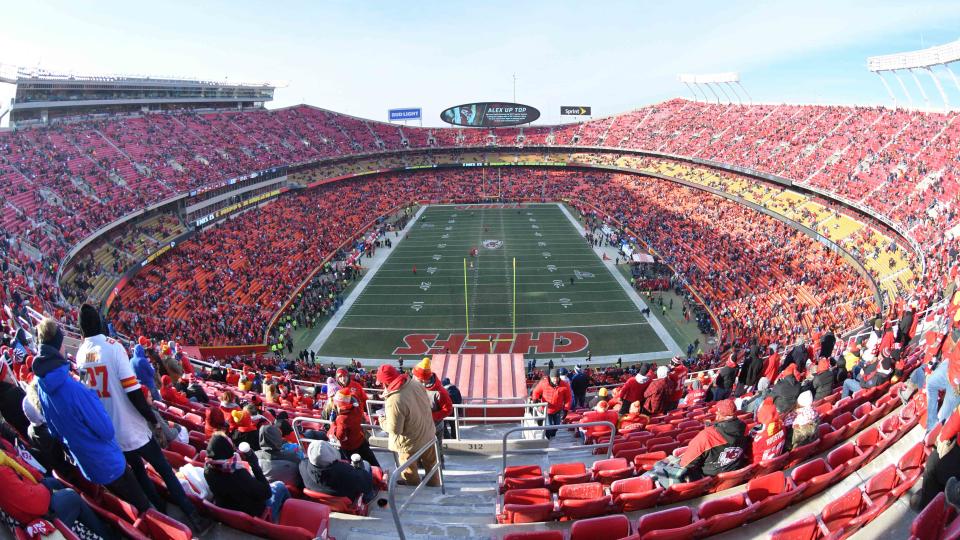
The name wasn’t meant to refer to Native peoples, the team says, but rather to Bartle’s time as an executive for the Boy Scouts. Bartle founded the Tribe Mic-O-Say, an honor society that appropriated Native motifs and nomenclature, in 1922. Bartle was named “Chief Lone Bear,” a nickname he was known by for the rest of his life.
The "tribe" appropriated Native culture on a wholesale scale. They had "reservations," "bands," and "societies," each with its own regalia and dances. Rhonda LeValdo, a member of the Acoma Pueblo, said she was appalled to learn that the "tribe" was performing its own version of the sacred Eagle Dance.
Along with the new name came a new logo, also created by Taylor: a shirtless Native man sporting washboard abs, a large feather headdress, buckskin leggings, moccasins and a loincloth. He wielded a tomahawk instead of a revolver and was depicted in front of the six-state area surrounding Kansas City. The "chief" was cradling a football.
Along with that came even more appropriation: the "arrowhead chop," a big powwow-style drum that reverberated at the start of home games, a chant straight out of a Hollywood Western and lots and lots of fans wearing fake headdresses and war paint. The team even brought out its very own mascot, Warpaint the horse.
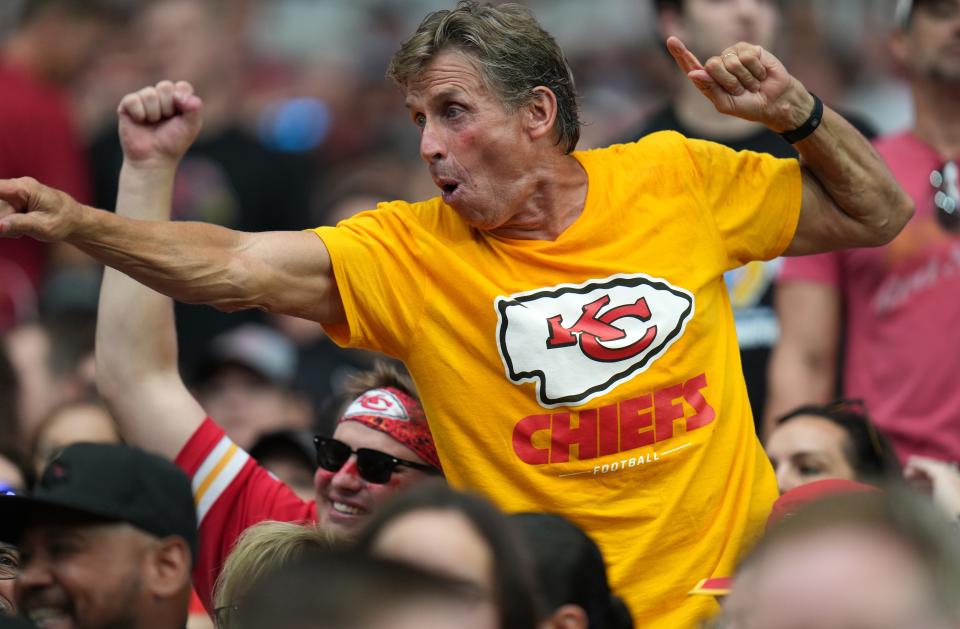
Other teams took full advantage of the Chiefs' logo in their own marketing. One ad promoting a matchup between the Chiefs and the New England Patriots in 1963 featured a Revolutionary War soldier with his rifle hidden offering an Indian chief some shiny beads.
The same person who is credited with giving the Super Bowl its name and using Roman numerals for each year’s big game also created the team’s current logo. The stylized arrowhead with the letters KC in the center was designed by the Chiefs’ founder and first owner Lamar Hunt, who scrawled the first iteration on a napkin in 1972. Hunt said he was inspired by the San Francisco 49ers’ motif.
The website Sports Logo History shows the previous and current logos for the Kansas City team.
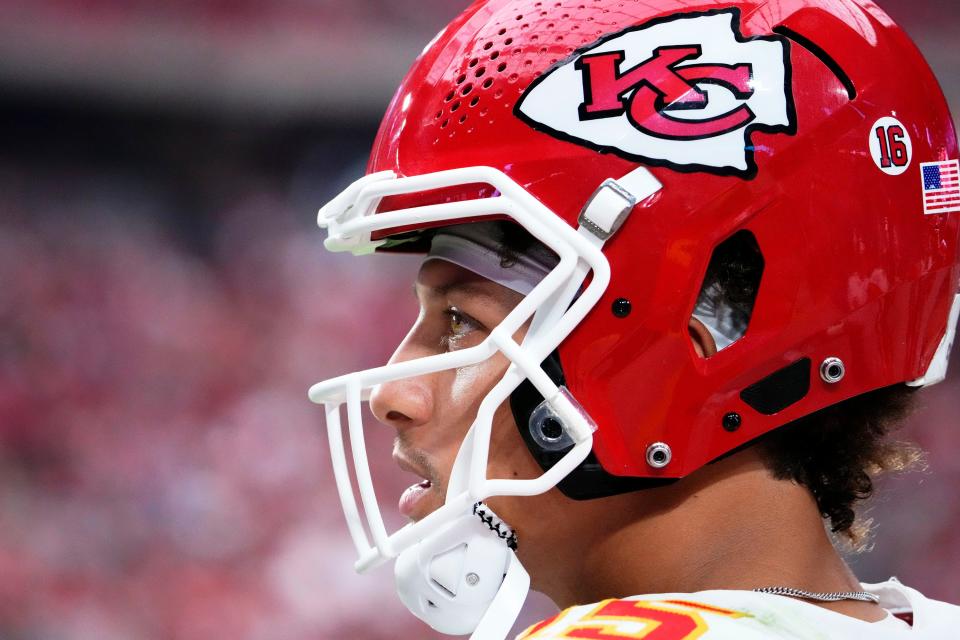
A new mascot, KC Wolf, made his debut in 1989. Warpaint came back for a short time beginning in 2009.
In 2014, the Chiefs started talking with some local community members. The Chiefs banned headdresses and Native-themed warpaint from the stadium in 2020. In a statement, the Chiefs also said they would review other inappropriate practices, such as the “Arrowhead chop.” Warpaint was retired for the final time in 2021. The team also features Native people at the drum (which is still in use), and members of the Native advisory group decided they were fine with the name "Chiefs."
The team website also lists other outreach events, such as hosting football clinics for tribal youth in various communities, educating the public about Indigenous regalia at games and during Native American Heritage Month, and blessing the team drum and honoring drum groups.
The Chiefs said they were unable to fulfill The Republic's request to speak with a team official or American Indian Working Group member about any of these activities or to address the concerns raised by Native people.
Frenzy:How restaurants at this Glendale mall prep for Super Bowl 2023 fans and 'pageantry'
Native mascots and sports teams are coming under fire
Sports teams have used Native imagery, cultural items and even dances to promote their teams for more than 100 years. The trend caught on quickly and hit its peak in the 1920s and 30s when high schools, universities and professional teams adopted names like Indians, Braves, Chiefs and in one case, the previous name of the Washington Commanders football team. That name was a word considered as offensive to Native people as the N-word is to Black people.
Communities rallied behind their teams. Fans bedecked themselves in "headdresses" made with chicken feathers and painted their faces as they imagined a Native warrior would. They whooped "war" cries and chopped their arms in the motion used to wield a tomahawk or other hand weapon when their team scored. They sang songs, danced imitations of actual tribal sacred dances and chanted how they thought Native people would chant.
In the 1970s, when Native peoples experienced a cultural and political renaissance, those mascots and team names were revealed as offensive and even harmful to Indigenous youth. Native activists began calling for the elimination of the names and practices, much as Black and Latino activists successfully retired similar mascots like Little Black Sambo and the Frito Bandito.
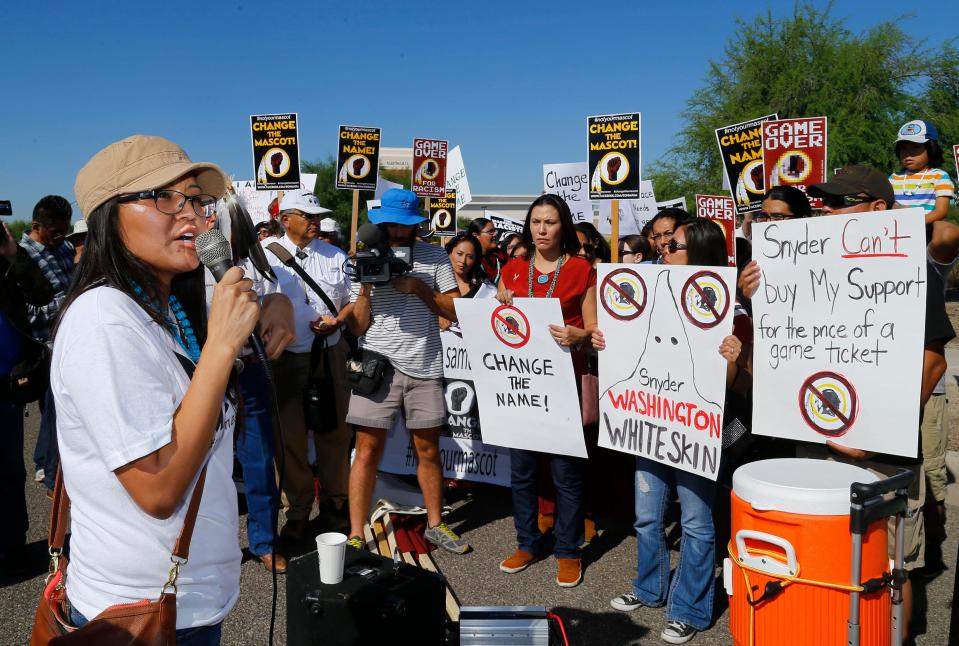
But activists say change is hard in the sports world. Even as mental health groups like the American Psychological Association and Native rights groups such as the National Congress of American Indians call for sending mascots and offensive or inappropriate practices to the trash bin, some teams and many fans have resisted the movement. One study even found that bias against Native communities increased as mascots are consigned to history.
Progress has been made to eliminate offensive team names, such as the one in Washington D.C. After decades of protests and a grass-roots effort by Indigenous activists, the team changed its name.
The Cleveland Indians retired its mascot, Chief Wahoo, in 2018 after nearly 75 years. And in 2021, the team formally changed its name to the Guardians for the 2022 season.
Working for change: For Amanda Blackhorse, getting rid of Washington's racist nickname is far from enough
Native people say: Let us tell our own story
Many Indigenous people want the team to go further while asking that the current rules be enforced.
LeValdo said fans were still using the "touchdown" chant, a stereotypical tune usually heard in old episodes of TV shows and movies, at Chiefs games. She and other activists have seen fans with headdresses entering the stadium.
"They don't seem to care," she said.
Gaylene Crouser echoes LeValdo's sentiments. "It is still around and people are still doing it," she said, although she sees fewer people sporting full regalia and headdresses at games. "But it is still there and it's still happening."
Crouser, the executive director of the Kansas City Indian Center and a member of the Standing Rock Sioux Tribe, and LeValdo said the most vocal anti-mascot activists were not invited to any talks with the team nor do they anticipate ever being at the table.
"The team has worked hard to put out the illusion that they work with tribes because they do work with a few tribal members," Crouser said. "But they weren't interested in talking to us because they knew what we would have to say."
The Indian Center didn't become officially involved with the anti-mascot group until a few years ago, she said. But they had talked with LeValdo and other longtime activists after a particularly egregious incident in late 2013 when a local Sonic restaurant posted a sign that said, "KC Chiefs, Stomp the (R-word), feed them whisky, send 2 reservation."
"It was so unbelievably racist," Crouser said. The Indian Center sent people, including cultural practitioners, to the owners to explain why the sign was unacceptable.
In the meantime, she said, the center launched a site called "Not in Our Honor," and has worked to raise awareness of why mascots and all the accouterments that go with them are harmful.
Some fans haven't taken the news well.
"Even though the team has tried to take away the most blatant racism with the wearing of the chicken feather headdresses and the face paint and the like, there's still so much left with the chopping and the business with the drum and that same behavior," Crouser said. "It's nothing for us to have people come up and scream in our faces and start singing that mimicking-stereotypes song and just start chopping right through our face."
Crouser said, "When fans scream that they mean to honor Native Americans, they are passing Native people who literally are holding a sign saying 'There is no honor in this.'
"We love our team, but we don't love the name and we don't love the chop."
Spears, an actor with more than two dozen film and television credits, doesn't usually show up on the protest line, opting for other ways to raise awareness of the harm mascots pose to Native peoples.
In an interview with The Republic from his Montana home, Spears, a member of the Kul Wicasa Oyate Lakota Lower Brulė Sioux Tribe, said the issue hit him hard while filming "The Year of the Dog," a film where he played the protagonist's AA sponsor. Spears persuaded the producer to change a scene where the main character, a non-Native man, shows up in an Atlanta Braves cap.
In the film, Spears says, "We're not Braves or Chiefs or Redskins ... we're real people ... I'm not a goofy cartoon. We don't do the Tomahawk Chop ... And that makes a difference in how we feel about ourselves. That affects my self-esteem. That affects our kids' self-esteem."
Spears, who said he is a lifelong protester against injustice, had to find a way to address that.
Once in Pine Ridge, South Dakota, he saw non-Indian parents taunting the Native players and dousing them with beer. It was an example of why inaccurate imagery is bringing harm to Indian Country.
"These images create the opportunity for white people to appropriate our culture," Spears said. "Imagery is storytelling and we need to tell our own stories."
Spears said stopping appropriation and misunderstanding will require people to hear and accept some hard truths.
"Communicate to each other, ask what would bring honor to us," he said.
Crouser and other Native people plan to come to Glendale for Super Bowl Sunday with their signs, "Love the team, hate the name," and other signage, to make their voices heard. They invite others to join them, Crouser said.
"Kansas City deserves better."
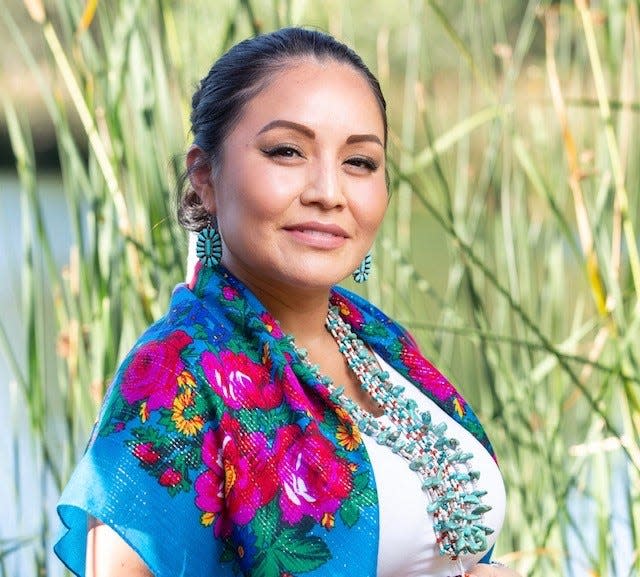
Amanda Blackhorse, the Navajo woman who led a team of Native people who sued the NFL to remove the offensive name from the Washington team, said she would stand with Crouser and other activists. Her group, No More Native Mascots, is working with the Kansas City Indian Center to organize the protest. Blackhorse said that while they will welcome the Chiefs, the team will encounter many more Native people in Phoenix than in Kansas City, Missouri. "They're not in Kansas anymore," she said.
Debra Krol reports on Indigenous communities at the confluence of climate, culture and commerce in Arizona and the Intermountain West. Reach Krol at debra.krol@azcentral.com. Follow her on Twitter at @debkrol.
Coverage of Indigenous issues at the intersection of climate, culture and commerce is supported by the Catena Foundation.
Support local journalism. Subscribe to azcentral.com today.
This article originally appeared on Arizona Republic: Native people want Kansas City to change "Chiefs" name

